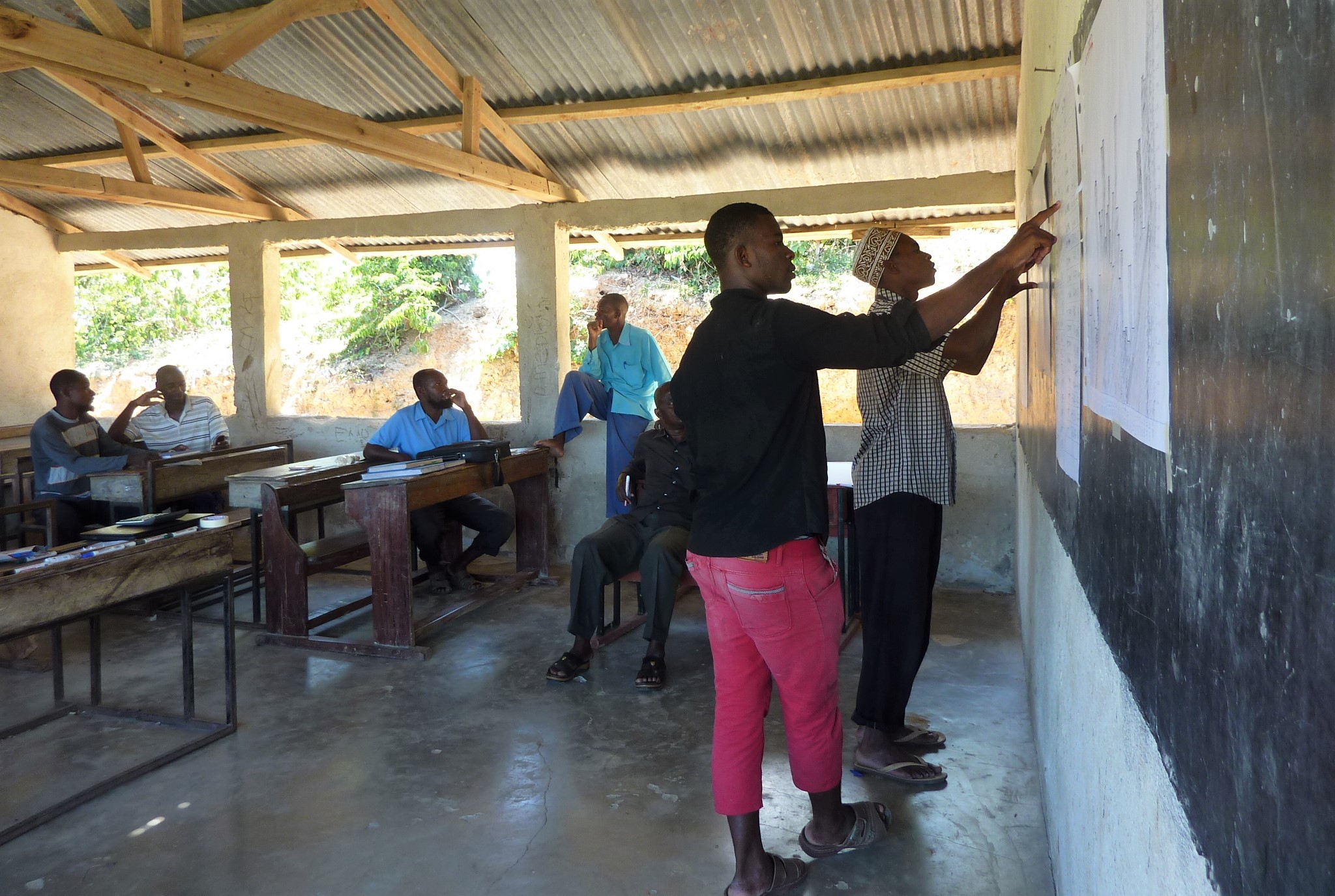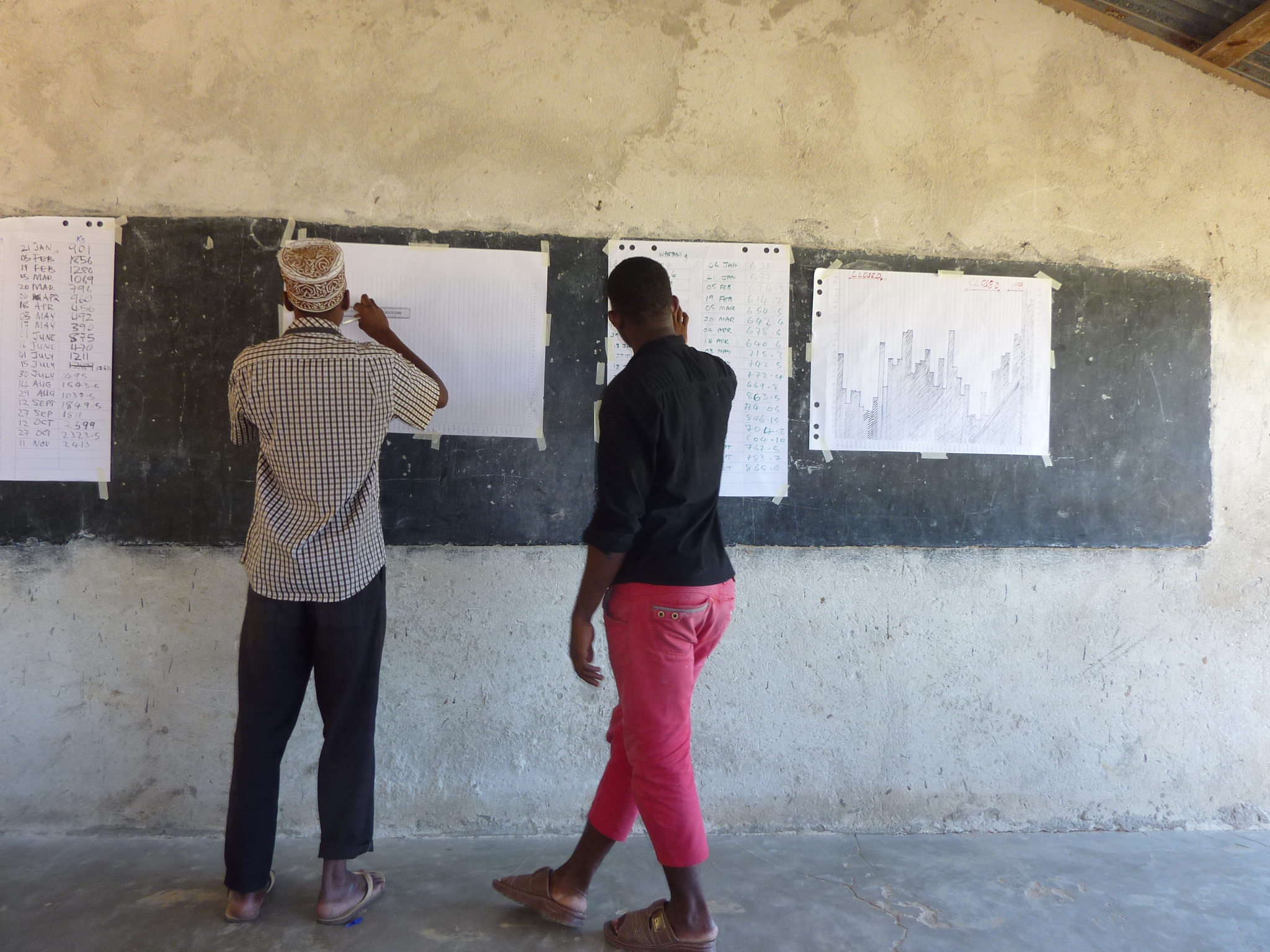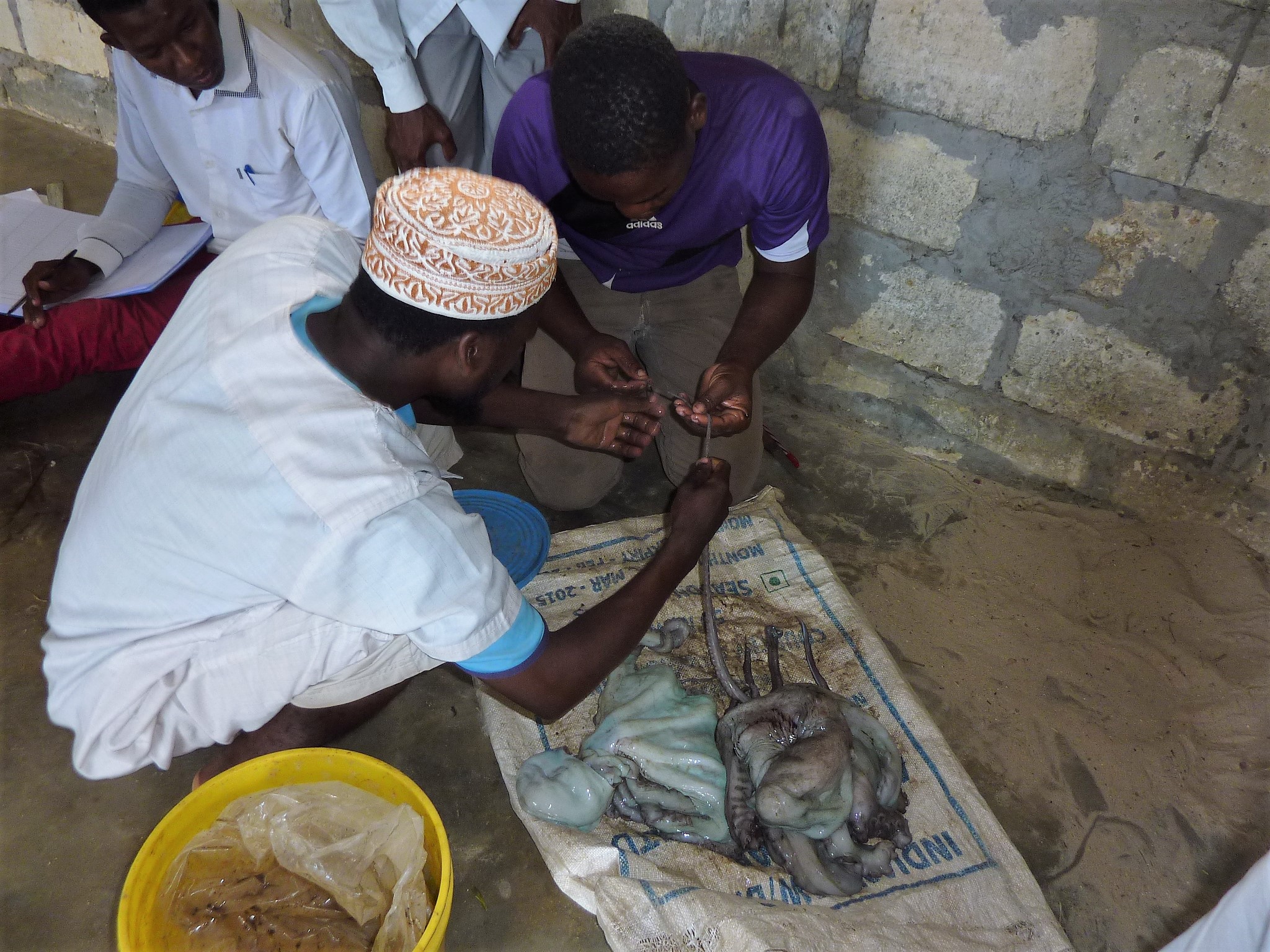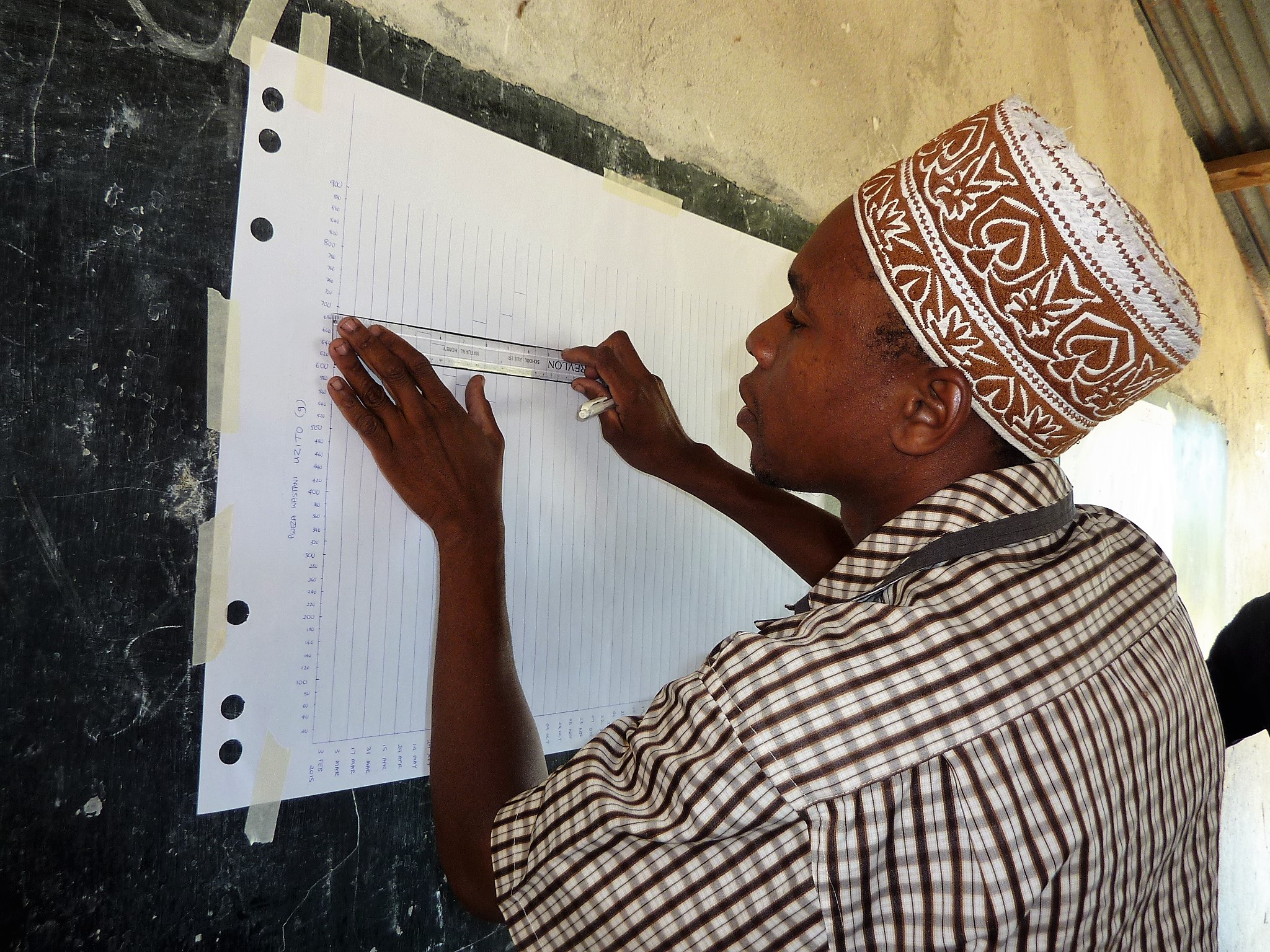




This building block relates to the ownership and in situ analysis of collected monitoring data. At the pilot site, four village school-leavers were recruited and trained to record data on octopus catches at each of two landing sites. Training was given in weighing and measuring the catch of 30 fishers/day over the 16 main fishing days of the lunar month (spring tides). Data books were then submitted monthly to the data logger; a local school teacher who was trained in excel using a laptop computer. Project leaders kept in regular contact with data recorders and the results were checked to identify problems at an early stage. After 8 months of recording, two parameters were chosen by which to examine the results of the exercise with the recording team: total catch per fishing period for both landing sites, and average size of octopus per fishing period. Recorders were shown how to make bar-charts to display the results. A detailed discussion with project leaders explored what the data and trends might suggest. The data recorders then visited the headquarters of the Department for Fisheries Development and presented their results. An ensuing discussion explored the implications for management and any changes suggested.
- Members of the community that can read and write in order to be able to make written records of catch data
- Buyers who are amenable to their catch being weighed and recorded at the landing site
- A community member who can be trained to log data on a laptop
- Regular support and interest in the work of the data recorders by project leaders
- A supporting partner/project leader who can facilitate simple analysis of data collected in a participatory manner
- Data recorders need a thorough understanding of the data to be collected and of the importance of correct recordings. (People’s exact names and ages, as well as the time spent fishing are important so that fishing effort can be calculated for instance).
- Regular logging and checking of data is crucial so that mistakes or misunderstandings can be picked up early and corrected accordingly (use of a restricted entry form (macro) helps minimize errors).
- Participatory analysis of data needs to be given adequate time and kept at a level that is easily assimilated and presented.
- Participatory analysis of data gives the data recorders and the Village Fisheries Committee pride and confidence in their work and raises their standing with Fisheries Department officers. It also gives them evidence/references for discussion of future management options with the community.